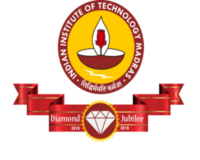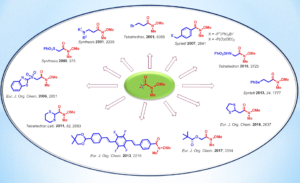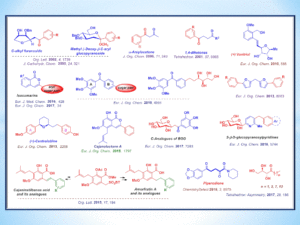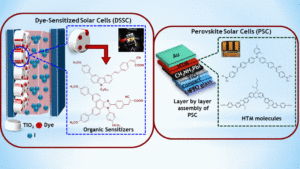- Home
- Research Highlights
Research activities in Professor Indrapal Singh’s Laboratory have been mainly in three directions. The first direction aimed at developing novel Synthetic equivalents based on Weinreb’s amide (WA) functionality and their applications in synthesis of important molecules. Natural products and their growing re-emergence in various therapeutic areas provides the inspiration and motivation for the second direction, which involves synthesis of important and challenging targets from the realm of carbohydrate chemistry, under the broad heading of C-glycosides and with the focus towards Medicinal Chemistry. In the third direction use of “synthetic organic chemistry” has been made for design and synthesis of new materials for varied applications in Science and Engineering.
BUILDING BLOCKS FOR SYNTHETIC PURSUITS:
The concept of “synthetic equivalents” or “building blocks” based on the Weinreb amide functionality proposed by Professor Singh has come a long way. There existed no such idea until he proposed this concept and initiated a systematic pursuit during late nineties. Several interesting and novel building blocks based on WA functionality have been developed for important applications. One of them finds place in the Aldrich Catalogue. A critical and comprehensive review on Weinreb-amide chemistry (Synthesis 2008, 3707) enlists the early achievements in proper perspective. The unaddressed chemo-selectivity issue between cyano and WA functionality has been studied for the first time, unraveling the importance of these functionalities in synthetic organic chemistry (Eur. J. Org. Chem., 2013, 4918). Few representative building blocks based on WA functionality can be found be in Synlet, 2013, 1777; Eur. J. Org. Chem. 2013, 2216; Org. Lett. 2015, 17, 194; Eur. J. Org. Chem. 2016, 2637; Eur. J. Org. Chem. 2017, 3594.
ORGANIC SYNTHESIS TOWARDS BIOLOGICALLY/MEDICINALLY IMPORTANT MOLECULES:
In the second direction good use of WA and acyl-anion Chemistry has been made towards synthesis of specific targets with promising biological activity. Syntheses of potent anti-cancer natural product, varitriol (Eur. J. Org. Chem., 2010, 555); C-Glycosylated Phenstatins (Eur. J. Org. Chem., 2010, 4991) as anti-mitotic agent, lipophilic tetrols (Tetrahedron: Asymmetry, 2017, 186) as anti-mycobacterial agents. In the recent times, natural products from the dietary legumes Glycyrrhiza foetida (licorice) and Cajanus cajan, has attracted our attention. Synthesis has enabled convenient access to initial libraries of synthetic analogues, for these two leads, from a common building block. The synthesized compounds have shown high binding affinities with PPARγ receptors opening-up great avenues towards possible development of drug candidate with improved safety profiles or serve as new chemical tools for mechanistic PPAR research (Org. Lett. 2015, 17, 194). A new lead has emerged from synthesis of 3-aryl-isocoumarins and its evaluation for inhibition of the enzymes in the leukotriene and prostaglandin pathways involved inflammation (Eur. J. Med. Chem., 2016, 124, 428-434). Synthesis of C-Analogues of another natural product, ß-Glucogallin, and known for prevention of cataract through aldose reductase inhibition has been achieved and evaluated (Eur. J. Org. Chem., 2017, 7283). The first synthesis of 3-Glycosylated isocoumarins (Eur. J. Org. Chem., 2017, 34) and Glucopyranosyl-pyridine based structural analogues (Eur. J. Org. Chem., 2018, 5744) of successful anti-diabetic drug, Dapagliflozin, acting through SGLT inhibition.
DESIGN AND SYNTHESIS OF NEW MATERIALS FOR VARIED APPLICATIONS:
Collaborative efforts with Physicists, Electrochemists, have inspired activities in the third direction, namely, synthesis of new materials for varied applications in Science and Engineering. A distyrylbenzene Derivative with Weinreb Amide Functionality has been developed as an efficient Laser Dye (Indian Patent Application No. 2643/CHE/2008). Another fluorescent probe has been synthesized and examined for multi-photon absorption properties. (Chem. Phys. 2011, 382, 68). In the recent times, synthetic effort towards Dye Sensitized Solar Cell has delivered good results (ChemistrySelect 2018, 8159; J. Electrochem. Soc. 2018, 165, H845).




